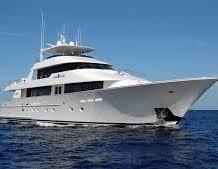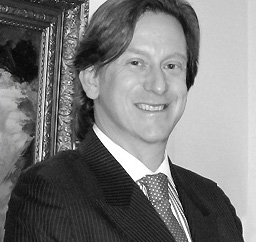Articles and News
Where Is The Luxury Jewelry Market Going? Part II: You Can Reach The Super-Rich | July 31, 2015 (0 comments)

New York, NY—In a multi-part series examining the future of the luxury jewelry market, The Centurion Newsletter opened with an examination of the market demographics. Many luxury analysts believe there’s more strength in numbers; i.e., serving the huge volume of lower-level affluent consumers, rather than trying to chase the smaller—and more elusive—super-rich consumer market.
But luxury consultant Doug Gollan, a longtime expert in reaching the ultra-high net worth (UHNW) consumer, says it’s not as hard as you think to tap into this market. In a Q&A with The Centurion, Gollan explains how.
The Centurion: While the lower-level affluent consumers (HHI up to $250,000) spend less per purchase than the ultra-affluent, demographers believe their sheer numbers more than make up for the difference, and they’re a more efficient use of a retailer’s resources. What’s your view?
Doug Gollan: It's not an either/or scenario in my opinion. Both are important segments. However, with the $250K and under segment, once you take out taxes, insurance, rent, car payments, loan repayments, utilities, cable TV, non-designer clothing, mobile phones, and so forth, there is a relatively small pie to slice up for discretionary purchases, be it accessories, jewelry, watches, fancy restaurants, or travel. So even once you cross the hurdle--that yes, there will be a purchase in the jewelry category—now you have intra-category competition.
On the other hand, if you go to the ultra-high net worth category (HHI $1 million+), they are buying in multiple categories. They are buying without a set budget, they are buying impromptu, they are buying while traveling and while at home.
The challenge is that for most retailers and brands it makes sense to play in both categories, but they try to cover both as part of one marketing plan, and generally the UHNW segment is not given the attention it deserves, and therefore the results aren't as strong as they could be. You then hear, ‘I don't have that type of super-rich client,’ which is mainly a result of not having put in place a real plan to begin with. My recommendation is to create two entirely separate marketing plans, one for the aspirational customer, and one for the UHNW target.

UHNW market expert Doug Gollan
Centurion: If a retailer does want to focus on the elusive very top of the market, what’s the best way to reach them?
Gollan: UHNW first and foremost are living, breathing human beings, who like the masses are different from each other, with different interests. This means there are no silver bullets. Sponsoring a polo tournament reaches only a small fraction of the audience. If I were a retailer, I would look at partnerships with as many other service providers to the Super Rich in my community as I could. Think luxury auto dealers, financial planners, FBOs (the private jet terminals at your local airport), high-end travel agencies, antique dealers.
Your Bentley dealer knows that the core customer is not buying a Bentley in place of a vacation or a piece of jewelry. Therefore, there is great opportunity to do cross-marketing. In private jet terminals, they often sell advertising and displays. Travel advisors who have super rich clients spending $5,000 per night on a hotel suite, again know that this client is also buying $2,000 handbags and $20,000 necklaces.
So what can you bring to the table? If you have relationships with jewelry and watch brands, why not find out if they will arrange factory tours? This could be something you can bring to your local travel agent: unique access that they could not get for their clients on their own. Now you have a touchpoint into their most affluent clients.
Centurion: Many luxury consumers who traded down to premium brands during the recession discovered they were quite satisfied with those products’ performance, and after the recession stayed with them instead of returning to the ultra-luxe brands. What’s your observation?
Gollan: I agree! In the travel sector, there is tremendous competition for 'lifestyle' hotels that are priced like a Hilton or Sheraton, but provide some type of an experience and in fact are competitive to Ritz-Carlton and Four Seasons as they provide a near-luxury experience at a discounted price.
Centurion: Do you think luxury consumers are more focused on products or experiences?
Gollan: I think generalizations are dangerous and often wrong. For jewelry retailers, while it may be fun to offer 'experiences' to get some PR and create buzz, your customer is still looking for the personal service and expert advice that made you successful. Make sure you don't lose sight of the forest through the trees.
Centurion: Does the desire for experiences vs. products change with income level, age, or life stage?
Gollan: Having a big income or net worth changes a lot, as it gives you the ability to buy things. I've heard many stories about watch collectors and owners of big yachts who never got interested [in those things] until much later in life. I go back to money is the key. I can love yachts, but if I don't have the money, no matter what my life stage is, I can't buy one.
Today's UHNW 80-year-old, acts like 60, and the 60-year-old acts like 40, so it is never too late if you have the money.
Centurion: What about rich Millennials? What are they looking for, and what turns them off? How do they differ from the Boomers and Gen-Xers, and what’s the same?
Gollan: Here's an interesting soundbite: in the travel business, the fastest growing segment using travel advisors—real people, not Expedia or Travelocity—is Millennials. Why? Because usually both partners work, and they are time pressured like no previous generation, particularly if they have children. In other words, they are comfortable using people who they view as experts. To me, this is an exciting opportunity for retailers. Luxury has so many definitions, so for savvy retailers this is an opportunity to help define luxury and the importance of jewelry to a new generation of potential clients.
Centurion: What do ultra-affluent consumers demand in a luxury product? What sets it apart enough for them to consider it worthy, and does that definition change with age?
Gollan: To say ‘trust’ might seem strange, but as it relates to getting a fair deal it's critical. UHNWs have limited bandwidth, so they are always looking for suppliers they can trust. They want service providers who will take the time to listen to their individual needs and provide top-level service. The key to the long-term relationship is that they believe you are providing them all of this at a fair price. They don't want to show something they bought to a friend and hear how they got the exact same thing from their guy at 50% off.
Centurion: The Washington Post recently had an article about how both Gucci and Louis Vuitton are struggling somewhat because demand for logo goods is way down. Can you address conspicuous vs. inconspicuous consumption?
Gollan: I don't think anybody should worry about the fortunes of Gucci or Louis Vuitton. No brands can maintain X growth year after year after year without hiccups. The challenge the global brands are facing is a ‘perfect storm' of dropping oil prices impacting Middle East consumers, the challenges in Russia, and the crack-down in luxury-goods buying in China at the same time some of the Latin American economies have cooled.
If demand for logos is down today, I am sure within a few years it will come back after the "luxury for less" and "$49 luxury" providers start churning out me-too bags without logos. There will be a turning point where demand for logos swings back.







